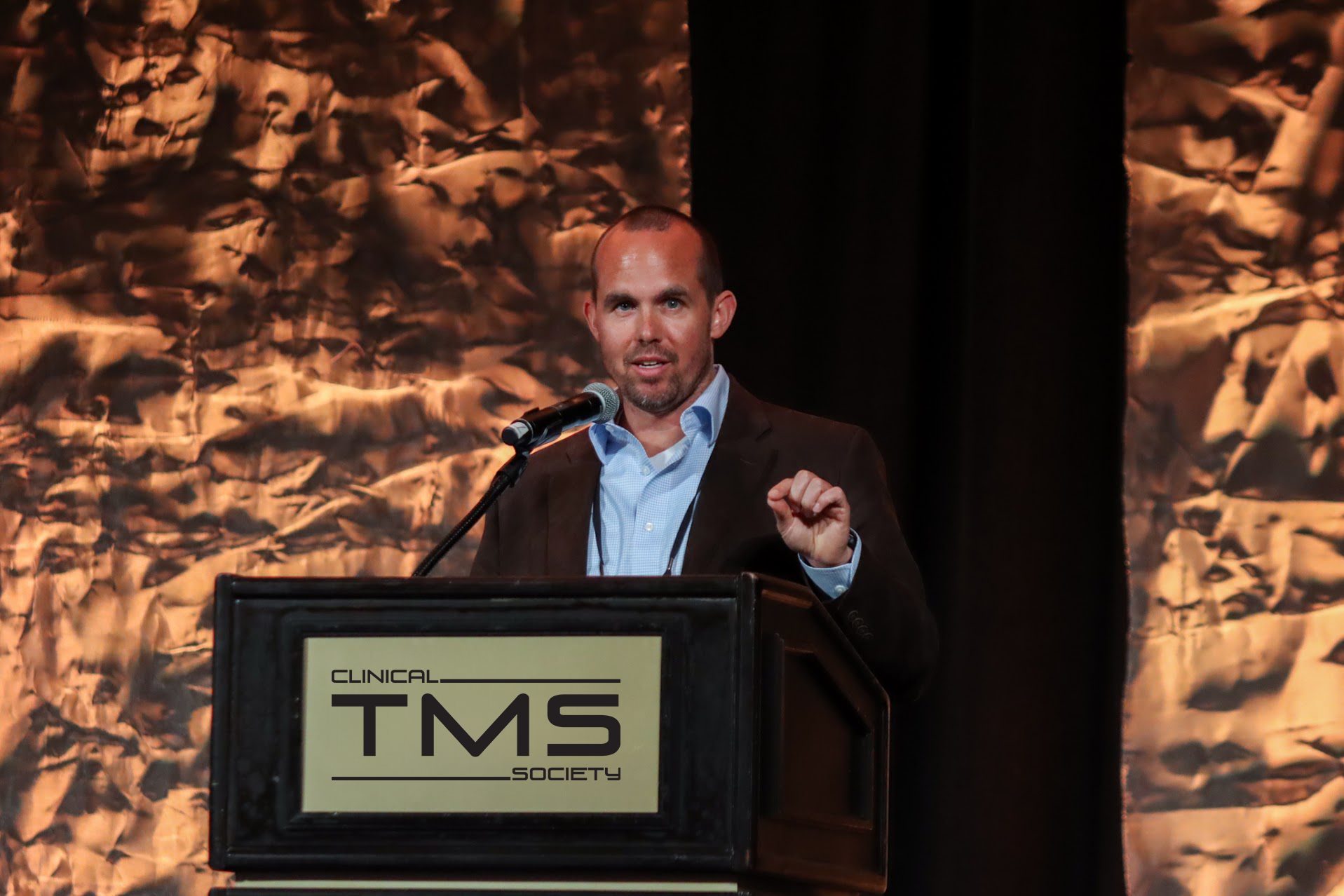Mon, 08/28/2023 - 12:35


Article by Jordan Galerkin - Scientific Writer
Meet Dr. Joshua Brown, who joined the Society in 2019 and was recently elected to the Clinical TMS Society Executive Committee as Member-at-Large and to the Board of Directors in 2021. He serves as co-chair of the Research Committee and works on several Task Forces.
“My first Annual Meeting was in Vancouver in 2019,” Dr. Brown says. “I found the meeting to be a nice balance between clinically relevant information and emerging neuroscience…I thought it was excellent for someone like myself, who’s both a physician and a researcher.” Dr. Brown currently serves as the Director of Research and Medical Director for TMS at McLean Hospital in Massachusetts, a major teaching hospital of Harvard Medical School.
Dr. Brown received his MD and PhD at the Medical College of Wisconsin. “My PhD was focused on mechanisms of synaptic plasticity,” he explains. He went on to complete a combined residency in neurology and psychiatry at the Medical University of South Carolina. “There, I was able to work with TMS pioneer Mark George as a part of a concurrent research fellowship and an interventional psychiatry track where I received training in clinical brain stimulation,” Dr. Brown says. He now splits his time between clinical TMS and TMS research including directing the Brain Stimulation Mechanisms Lab and TMS research across McLean Hospital.
“Our lab is interested in understanding how TMS produces changes in the brain at a synaptic or neuronal level…and then leveraging that knowledge to better understand how we can optimize pharmacologic augmentation strategies and figure out parameter space selection to ultimately improve and optimize TMS effectiveness,” he explains. The team at McLean was recently awarded a large DARPA grant to accelerate this research. “The grant looks at how we can use TMS combined with an NMDA receptor activating drug to modulate networks that are involved with emotional regulation and cognitive flexibility for folks with trauma, trans-diagnostically,” Dr. Brown says. “The hope of the Department of Defense is that this can be implemented with soldiers in the field, but of course for us, so many people suffer from the effects of trauma, and we want to be able to improve these domains. I really like this focus of shifting away from purely disorder- and diagnosis-based towards what we think aligns better with the underlying neuroanatomy and neuropathophysiology.”
Initiated by the recommendation of Society colleagues, his potential contribution to the Society through a combined background in clinical work and research is one of the reasons Dr. Brown decided to run for the Board of Directors. “I think the Society and the Board has a nice balance of…academic researchers, clinicians, and people in private practice…and I think that works really well for fulfilling the Society mission.” As the Member-at-Large, Dr. Brown is also on the Structure and Implementation task force and will be responsible for leading the new member Councils. The special Structural Committee he worked on last year during Dr. Abdelghani’s presidency, led by Dr. Debbie Stultz, decided on the creation of Councils to better serve Society members.
“In addition to the committees and the Board as ways for members to be involved, we’ll have this new entity that allows for organization [of groups] based on geography, topics of interest…or modes of practice. Essentially there is no limit [to the Councils]; these are designed to be very open,” Dr. Brown explains. “[The Councils] will be easy for members to join and provide a way for them to have a voice with the Board, to network, and to make connections that can lead to change.”
Dr. Brown is also part of an exciting new initiative the Society is undertaking – the formation of a TMS journal. “There are great journals on neuromodulation, but they tend to have a more mechanistic focus,” Dr. Brown says. “There’s not really a place specifically for TMS articles, especially of a more clinical nature.” He explains that the idea of starting a journal within the Clinical TMS Society has been on many members’ minds for years and was voted on in 2022 to move forward as an initiative of the Research Committee.
Dr. Brown is leading the Journal Task Force. “It’s fun because there’s so much enthusiasm,” he says. “I think it’s going to be a huge benefit to Society members and the Society’s mission. It gives us a vehicle that we’ve never had before of disseminating the most up-to-date information, which before has been largely constrained to Grand Rounds webinars and Annual Meetings,” he explains. “The journal will include things like mechanisms, biomarkers, ethics parameters, technology, and safety aspects. But the bread and butter of the journal will be clinical studies, and in particular, naturalistic findings of high quality.”
The journal will be called Transcranial Magnetic Stimulation: A Journal of the Clinical TMS Society with plans to launch by Spring of 2024. “We still have a lot to learn about TMS and its effects,” Dr. Brown acknowledges. “I think the journal will be a great place to help accelerate the growth and improvement of the field.” Dr. Brown is excited about the future of TMS research and the role the Society plays in furthering it. “My deep passion is to understand how the brain works…and one of the things I love about TMS is that it’s a tool we can use to understand how it works and to modulate how it works,” he says. “I’m indebted and grateful to people like my previous mentor, Mark George, and other early pioneers of the field that laid the foundation for us to be able to do this work.”